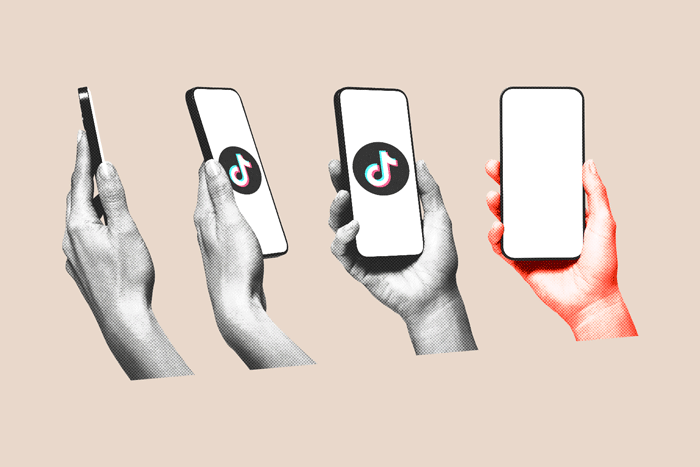Going beyond the basics should be your starting point if you want to go the extra mile. Let’s face it — what worked in marketing 10 years ago isn’t cutting it anymore. Customer habits have changed. Technology has reshaped how businesses connect with audiences. Competitors? Don’t get me started.
While this might sound like bad news for small businesses, it’s also an opportunity to evolve. It’s time to embrace advanced marketing strategies or risk being left behind.
Here’s what it takes to help you level up and drive real growth.
Related: How Small Businesses Can Score Big Marketing Wins Without Much Money
Time to leave old habits behind
Doing the same thing over and over while expecting better results? That’s not innovation; it’s stagnation. Many small businesses hesitate to adapt, clinging to what’s familiar. But I’ll be honest: This is why small businesses fail.
Marketing is the heartbeat of your business, and if you want it to keep pumping, you need to embrace new ways of doing things. Social media, digital tools and data-driven strategies have made it easier than ever to reach your audience — if you’re willing to spend the time and effort.
Take ecommerce platforms, for example. They let you manage your operations from anywhere, reducing overhead costs and increasing flexibility. Cloud-based solutions streamline your workflows, making it possible to do more with less.
Artificial intelligence has also come a long way simplifying tasks that once seemed impossible, from customer segmentation to predictive analytics. The tools are out there. The question is: Are you ready to use them?
1. Why personalization is non-negotiable
Customers don’t want to feel like just another number. They expect personalized experiences tailored to their needs and preferences. A study by Epsilon found that 80% of consumers are more likely to purchase when brands personalize their interactions.
Don’t just stick someone’s name on an email subject line. You need to craft experiences that make people feel seen and understood. Think of brands like Apple, where they don’t just sell products but create an ecosystem that feels seamless and personal.
How to nail personalization
- Dynamic content: This refers to messaging and other features on your website that make content appear differently for different people. Use tools like HubSpot or Adobe Target to customize what your website visitors see based on their preferences, behavior and demographics.
- Hyper-targeted ads: AI-powered tools can help you serve ads to ultra-specific audiences, making your messages more relevant and impactful.
When people know you made an effort to understand them individually (not just their demographic), you can turn casual browsers into loyal customers. And for small businesses, loyalty is everything.
Related: 3 Ways to Personalize Your Marketing for Higher Engagement
2. The power of content clusters
Let’s talk SEO. It’s been around for a long time, and chances are, your competitors have optimized their websites already. If you’re not doing that, you’re missing out on free traffic. But basic SEO isn’t enough anymore. This is where content clusters come in.
Remember the times you went into a rabbit hole searching for information on a certain topic? Do this for your website: write articles that are related to each other to create a content cluster — make sure they all link back to a central “pillar” page. This will help you keep visitors engaged on your site longer.
How to build a content cluster
- Pick a broad topic: Choose something relevant to your audience, like “Marketing for Small Businesses.”
- Create a pillar page: This should be an in-depth resource covering the topic comprehensively.
- Write cluster articles: These are smaller pieces that dive into subtopics, like “How to Use LinkedIn for Growth” or “Maximizing Instagram Ads.”
- Link everything together: Use interlinks to connect your cluster articles to the pillar page and to each other.
3. Conversational marketing: Why it works
Remember the times when marketing used to be one-sided? Today, it’s all about dialogue. Conversational marketing allows you to connect with customers in real time through live chats, social media messaging and even AI chatbots.
Why is this so effective? Because people want answers now — not tomorrow, not in three days. Real-time interactions build trust and keep customers engaged.
Your tools:
- Add live chat to your website to offer instant support.
- Use social messaging apps to reach customers where they already spend their time.
- When handling routine queries, give chatbots a try to free up your time for more complex issues.
Think of conversational marketing as the digital equivalent of having a friendly shopkeeper always ready to help. It’s simple, effective and it works.
4. Why virtual events are a must
If you’re not hosting webinars or virtual events, you’re leaving money — and credibility — on the table. These events let you connect with a broader audience, showcase your expertise and build trust — all without the hassle of travel.
How to maximize virtual events
- Promote early: Use email and social media to generate buzz well in advance.
- Make it easy to join: Platforms like Zoom and LinkedIn Live are user-friendly and widely accessible.
- Offer real value: Share actionable insights and solutions to real problems. Generic advice won’t cut it.
And don’t forget to record the event. You can repurpose the content into blog posts, social media clips or even infographics to extend its reach.
Experiment, measure, adapt
What works for one business might not work for another. The key is to keep testing and be willing to pivot when necessary.
Try new tools. Explore new platforms. Dive into data to see what’s resonating with your audience. The more you experiment, the more you’ll learn — and the more effective your marketing will be.
Related: 7 Marketing Strategies to Help Your Startup Grow and Scale
The bottom line
The old ways are fading fast. That being said, you don’t need to overhaul your entire strategy overnight. Stay curious, make time for trial and error and take small but intentional steps to actually connect with your audience.
Read the full article here










